Many people think about muscle-building nutrition in vague terms of eating more protein and reducing their carbs. The fact is, your nutritional plan needs to be a bit more specific if you want to build muscle quickly without gaining fat.
Yes, you do need to be sure that your macros (ratio of protein, carbs and fats) are on target, but our bodies also need a good supply of specific macronutrients in order to utilize our food for energy and to aid in muscle repair and recovery.
Eating to build muscle is also a three-pronged plan. Eating the right foods is just one aspect. You also need to eat the right foods at the right time and eliminate foods that will interfere with your muscle-building goals.
In this post, I’m going to help you understand and follow the three steps to eating to build muscle. These steps will not only help you build muscle, they’ll also help you to lose excess fat or prevent fat gain (depending on your current body fat ratio).
Step One: Eliminate the Foods That Will Hold You Back
Before you start calculating the protein you need and before you start divvying up your calorie allowance, you need to eliminate any foods that will make those things irrelevant. Even if you’re getting 1800 calories with 40% of them from protein (just as an example), the rest of your diet may work against building muscle. Too much sugar, starch and unhealthy fat will upset your hormonal balances and cause your body to store fat rather than build muscle.
The first thing you need to do is eliminate processed foods. By this I mean get rid of foods containing refined flours, refined sugar, high-fructose corn syrup and unhealthy trans-fats. These foods not only contain too much fat and too many calories, they also throw your insulin levels out of whack and contribute to insulin resistance. What that means is that your cells will have a hard time absorbing glycogen and that glycogen will be stored as fat instead. Not only will you gain fat, but you won’t have enough nutrients to help you build muscle.
Now, this doesn’t mean you have to live without every single treat food. You just need to choose your cheat foods wisely and reserve them as treats instead of eating them daily. If you crave chocolate, a square of dark chocolate is much better than two scoops of chocolate ice cream. If you want a salty snack, go for kale chips or salted almonds instead of French fries or potato chips.
Step Two: Eat Plenty of the Right Foods
Eating to build muscle means getting enough protein, getting the right kinds of carbs and getting enough of the antioxidants and other micronutrients that support hormone balance and muscle growth.
Muscle-Building Macros
Your body needs a different macro balance for different things. If you have a decent amount of stored fat to lose, you probably need less carbs and fat in your diet. If your fat ratio is fine, you can eat more of these. Regardless, you need to get enough protein to support the growth of new muscle and prevent muscle catabolism (your body’s response to low calories or insufficient protein is to steal it from your muscle cells).
For most women, a diet of 30-40% protein, 40-50% carbs and 10-20% fat is best. You may find that 40-40-20 works for you, while your best friend may do better with 40-50-10. You’ll likely need to play around with those numbers over the course of a couple of months or so to see which formula keeps you satisfied, fuels muscle gain and gives you enough energy.
Protein: Yes, you do need to get enough lean protein to supply your body with the building blocks for new muscle. In general, eating 1-1.5g of protein per pound of body weight is a good rule of thumb, so if you weigh 110 pounds, you should be eating between 110-165g of protein each day. Try to stick with grass-fed and pasture-raised meats like beef, poultry and eggs, supplemented by plant-based proteins in vegetables, beans, quinoa, nuts and seeds.
Carbs: Your body needs carbs to build muscle, but a carb is not a carb. You want to limit or eliminate starchy carbs, like white rice, white potatoes, breads, cereals and so on. This is especially true if you have fat to lose while you’re building muscle.
As a general rule, you need to get about 80-90% of your carbs from vegetables and low-glycemic fruits like apples, pears, plums and melon.
Fats: Don’t even think about trying to cut your fat to drastically-low levels. Your body needs healthy fats to function and healthy fats also aid muscle building and recovery. That said, you need to get your fats from the right sources, mainly grass-fed meats, nuts, seeds, eggs, olives, avocadoes and olive oil and coconut oil.
If you find yourself starving all the time even though you’re getting roughly the right number of calories, you may have to increase your fat intake. Try increasing the amount of animal protein, nuts and seeds in your daily diet and that should take care of any protein and fat deficiency.
Muscle-Building Micros
In addition to the right combination of macronutrients, you also need to get enough of certain micronutrients (vitamins, minerals, antioxidants). While you should strive to get a wide variety of micronutrients by eating a wide variety of whole, fresh foods, there are a few micros that are especially important for building lean muscle.
Magnesium and Potassium: Magnesium and potassium increase blood flow and oxygen to muscle cells and are extremely important for muscle building and recovery.
Foods high in magnesium are spinach, quinoa, kidney beans, lentils, bananas and oats. For lots of potassium, be sure to eat white beans, dark, leafy greens, bananas, acorn squash, fresh fish, avocadoes and mushrooms.
CLAs or conjugated linoleic acids: These essential fatty acids are one of the Omega-6 fats and are one of the amino acids your body needs for building muscle. The best sources are grass-fed meats, butter from grass-fed cows and pasture-raised eggs.
Omega-3 fats: Omega-3 fats are extremely important for reducing inflammation and aiding muscle recovery. Your healthiest sources are flax seed, walnuts, salmon and other fatty fish, shrimp, cauliflower, Brussels sprouts and winter squash.
Vitamin E: Vitamin E is one of your body’s most important antioxidants for repairing muscle and reducing inflammation. Great sources include spinach, almonds, sunflower and pumpkin seeds, avocadoes, shellfish, rainbow trout, swordfish, olive oil, broccoli and pumpkin.
Vitamin C: Vitamin C is another powerful antioxidant. It not only helps with muscle recovery and repair, it also promotes hormone synthesis and fat loss. Great sources of this multitasking micro include dark leafy greens such as spinach, kale, collards and Romaine lettuce, as well as fruits such as berries, apples, watermelon, kiwi and plums. Of these choices, berries, apples and watermelon are the lowest on the glycemic index, so opt for these when your carb allowance is tight.
Glutamine: Your body does make and store some glutamine, which is used to build lean muscle and provide energy, but much of it will be used up during a strenuous workout. Eating grass-fed meats, pasture-raised eggs and poultry, raw spinach, raw parsley and cabbage will help replenish your stores of glutamine.
If you look at this list, you’ll see some of the same foods coming up repeatedly. Try to include these foods as much as possible when planning out your macro allowances. Go for grass-fed meats, pasture-raised eggs and fatty fish when planning out your proteins, avocadoes, olive and coconut oil, walnuts and seeds when portioning out your fats and berries, leafy greens, bananas, apples, broccoli and squash when choosing carbs.
You’ll be getting the right macros and also ensuring that you eat enough of these important micronutrients as well.
Step Three: Eating the Right Foods at the Right Time
Eating to build muscle also requires that you get the right nutrients at the right time.
As a general rule, you should get some healthy fats with every meal and snack, as healthy fats slow the absorption of carbs, aid in the absorption of vitamins, help you feel satisfied and prevent cravings.
It’s also a good idea to get some protein with every meal or snack, but protein is especially important at certain times during your day. Eating protein when you first wake up helps to replenish the protein stores that were utilized for muscle recovery while you were sleeping. You also need a good protein boost before you work out, to prevent muscle catabolism during a strenuous session. You should have some protein right after you work out as well, again to replenish what your workout has used up. Sticking with protein snacks (instead of carbs) late at night will help fuel muscle recovery during sleep.
Timing your carbs properly is also very important. Get a decent amount of carbs in the morning to help give you energy for your day and break your carb fast. You also need some fast-acting carbs like berries, bananas and melon right after your workout to replenish energy stores. Also, you want to try to eat your higher-glycemic carbs (grains and sugary fruits) early in the day (when they’re likely to be burned off) and as a post-workout treat. Stick to low-glycemic carbs like veggies from late afternoon onward; you’re less likely to need them for energy and more likely to store them as fat.
The great thing about eating to build muscle (aside from building that sexy muscle!) is that you’re able to eat plenty of food. As long as you fill up on plenty of the good stuff and limit the bad (or less good) stuff to occasional treats, you’ll be able to eat well and still lose fat.
References:
Kreider RB, Ferreira MP, Greenwood M, Wilson M, Almada AL (2002) Effects of conjugated linoleic acid supplementation during resistance training on body composition, bone density, strength, and selected hematological markers. Journal of Strength Conditioning Res 16: 325–334.
Bergstrom J, Furst P, Noree L-O, et al. (1974) Intracellular free amino acid concentration in human muscle tissue. Journal of Applied Physiology. 36: 471-4.
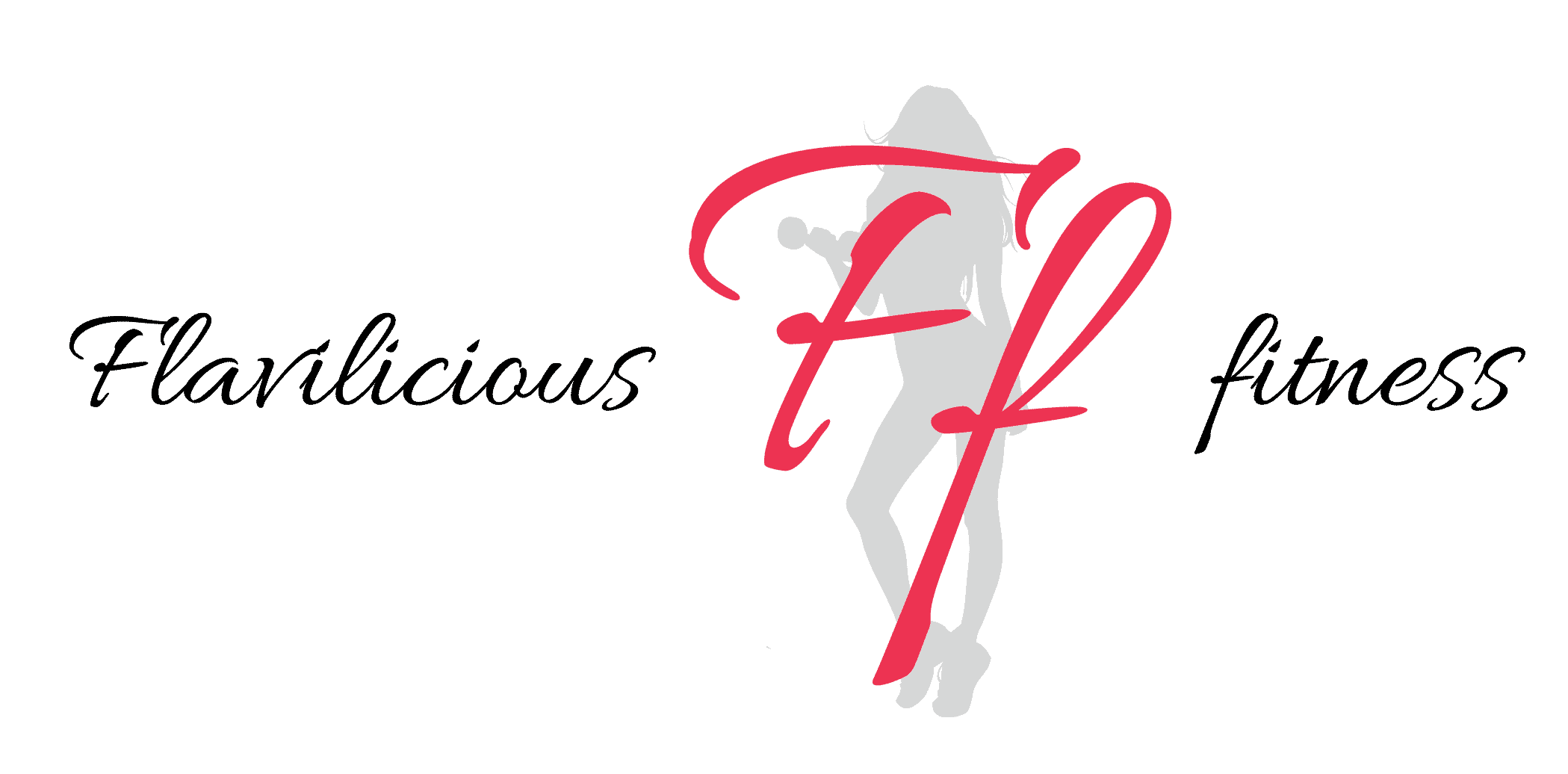

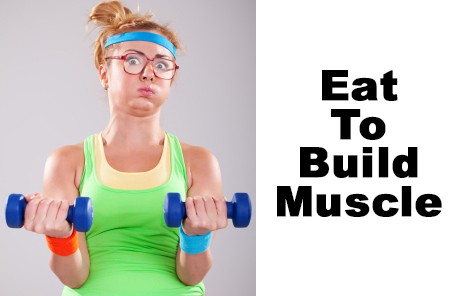


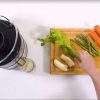
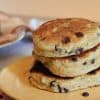
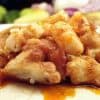

Hi, Flavia! I’m a skinny girl who overexceeded burning fat and lost all of my sexy muscle. I am following your advice on training, based on your response on one of your Youtube’s video. I luv that you ear goat cheese. I also drink goat milk, nothing cowy ;).
Also dropped meat and only eat fish, almonds, nuts, veggies and homemade bread integral version 🙂
My question is: what should I eat before exercise? Because I. Use to exercise, have breakfast (scrambled eggs and malta (healthier version of coffee), for example) and then go to work. At work, 10 am aprox., I eat palta (advocados I think you call it) with honey and green tea. Then, my other meals. My goal is to rebuild my muscle and be healthier and sexier. Am I in the right path?? Thanks a lot and sorry for my primary english. Greetings and blessings from Argentina.
Hi Victoria,
Check out these articles, they should really help you: https://flaviliciousfitness.com/2014/03/29/how-build-muscle/ https://flaviliciousfitness.com/2012/11/06/curvalicious-meal-plans/
Any type of protein such as egg whites, or a protein shake before your workout would be great.
All the best!
Anna, CPT, FF Specialist
I feel like I should have paid for all this information…Love it!
http://know-how-to-build-muscle.blogspot.com/
I know that eating good and balanced diet really helps you to build some attractive muscles. but honey, i really tried most of the times to leave fast foods and artificial sweets, but failed all the time when ever i tried. I just want to get rid of this bad habit, therefore i also running on a few miles track daily early in the morning. I feel much better and strong day by day, even i stop eating fast and junk oily foods but still failed to stop the sweets, candies and chocolates. Please suggest me some good tips for leaving this bad habit of artificial sweets. Thanks for this lovely post!
waiting for your suggestion.
That’s cool what u do here! First we need to get motivated! I found cool info here http://www.dietformula.info/blog/stay-motivated-lose-weight/
Having a nice fit body is everyone’s dream. It’s essential to remain healthy all the time. Building muscle is just as important as that. Thanks for this nice informative post on that fact. I really appreciate this effort as it will help many including me. Good job.
Hello, I have a question. I’m a 30yr active petite women. 5 feet 122 pounds and my goal is to lose body fat and gain lean muscle. I’ve been doing weight lifting for the past 3weeks but I don’t see much of a difference. Does my calorie intake have to do with it? Some people have told me that I should stay at a 1200-1500 calorie intake. With more protein. What do you recommend. Also is cardio necessary 5 days a week?
Hi Denise,
It does take time so stick with it and you should start seeing results soon. I would start out with only 3, 20 minute HIIT sessions per week for cardio. Since you are wanting to gain muscle I would stick to the 1,500 – 1,600 calorie range. Make sure you are getting your nutrients from clean, healthy foods.
All the best!
Anna, CPT, FF Specialist
Its been great article on how to build muscle !!
For motivation have a look on most Muscular women in world : http://www.musclestyles.com/top-10-muscular-women-in-the-world/
Hi, I’ve been trying to keep buying what is listed in the contents but hardly can get cooking beef as well as it shows in the beef and cauliflower recipe. Please could you give me some advice? I am really on a loose end. Plus, I even get edgy about having rice due to reading that white rice is to be limited….
Hi Rebecca,
Brown rice is a healthy substitute and you can eat 1/2 cup – 1 cup every day if you wish. Sweet potatoes are also a very healthy carbohydrate. Beef is great but you don’t necessarily have to have beef. Any low fat, high protein meat will do such as chicken, turkey and all types of fish. Also, whatever fruits are available in your area can be good carbohydrate sources as well.
All the best,
Anna, CPT, FF Specialist